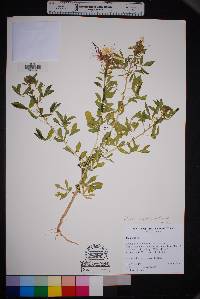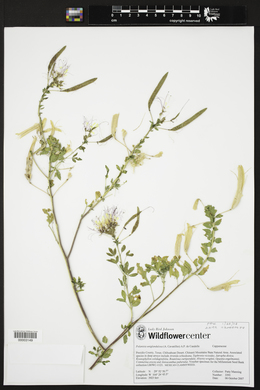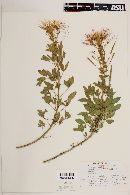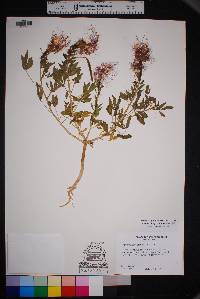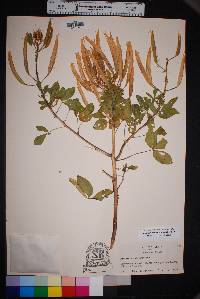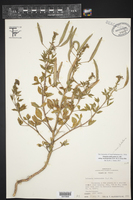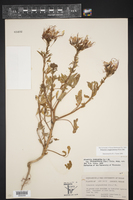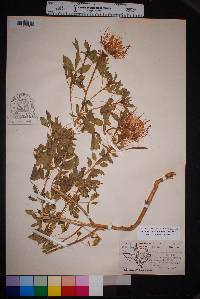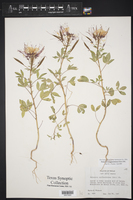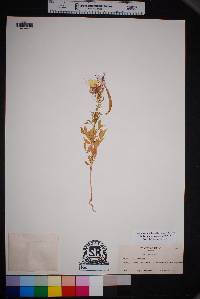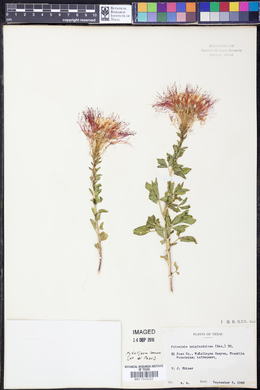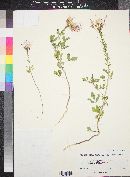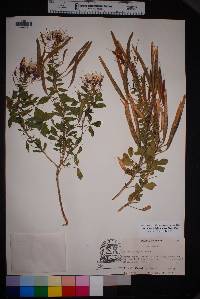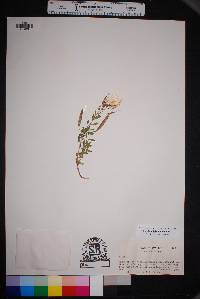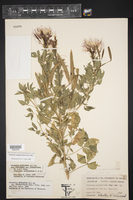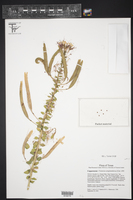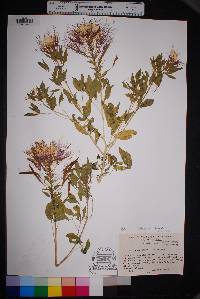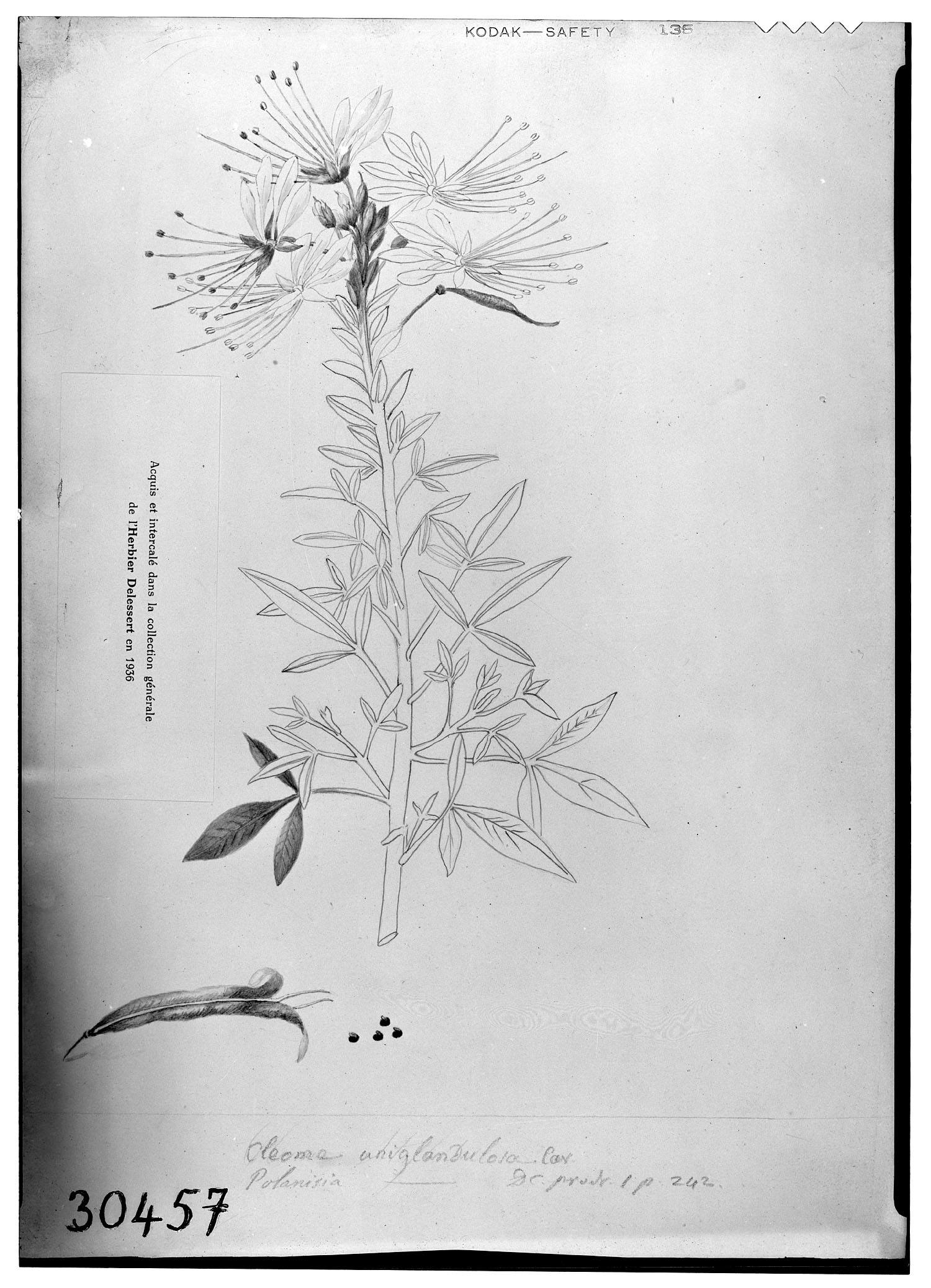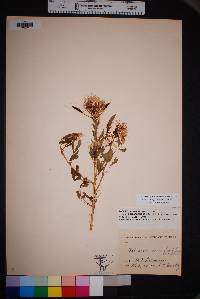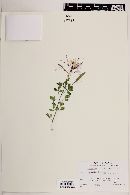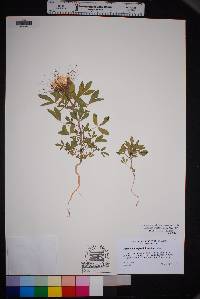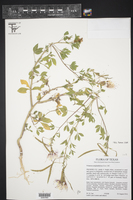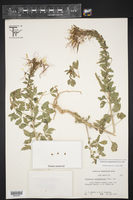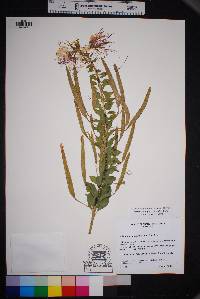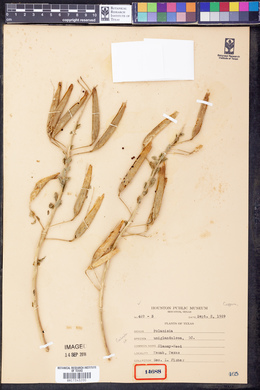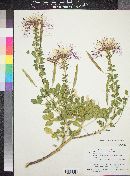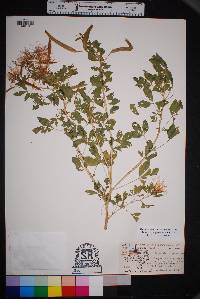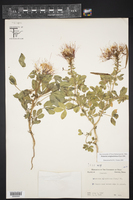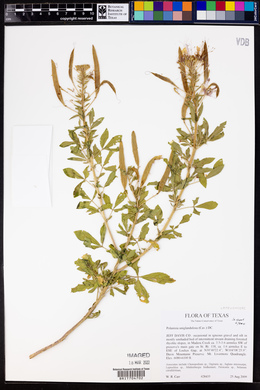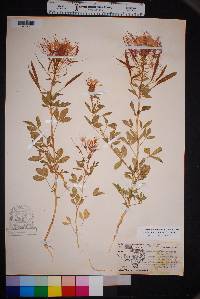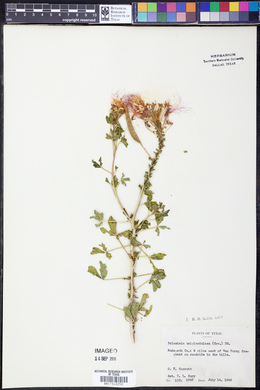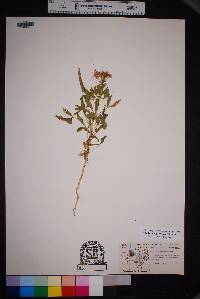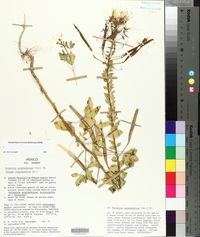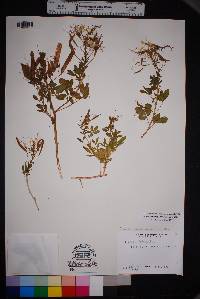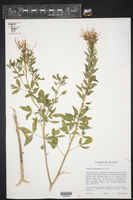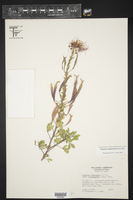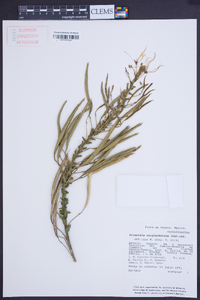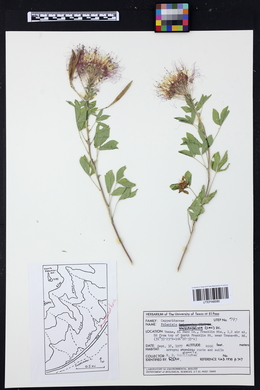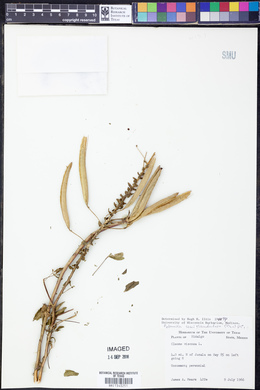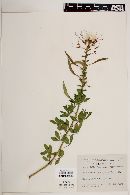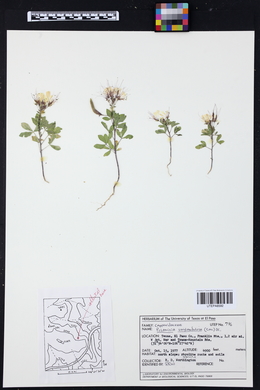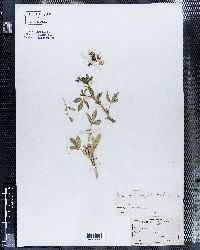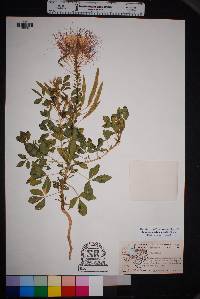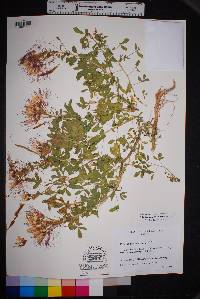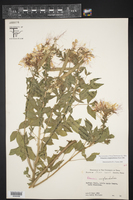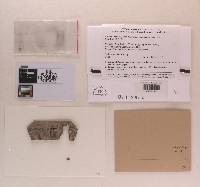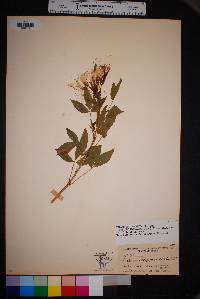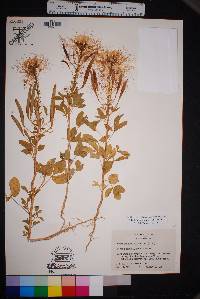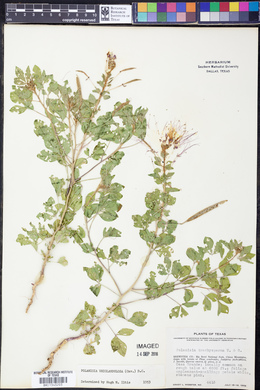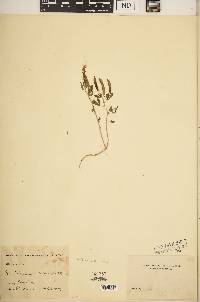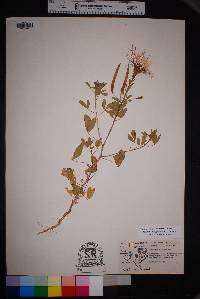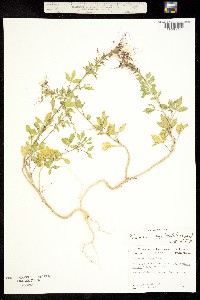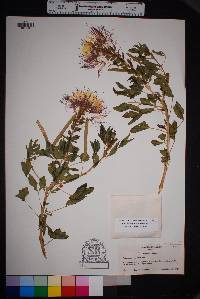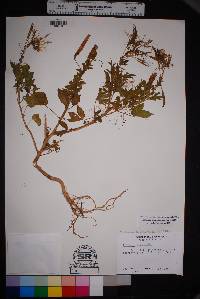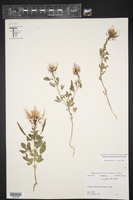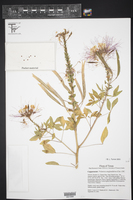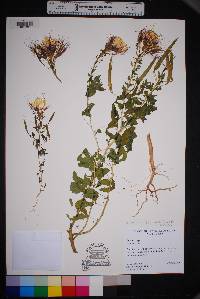
|
|
|
|
Family: Cleomaceae
Mexican Clammyweed
[Cleome uniglandulosa Cav., morePolanisia dodecandra subsp. uniglandulosa (Cav.) Iltis] |
Perennials, 40-80 cm. Stems sparsely or profusely branched; hairs stalked, glandular throughout. Leaves: petiole green to purple, angled, 1.5-4.5(-6) cm, (glandular); leaflet blade broadly elliptic to oblanceolate, 2-4 × 1-2 cm, margins entire, apex obtuse, mucronulate, surfaces sparsely glandular. Racemes 5-20 cm (10-30 cm in fruit); bracts unifoliate, ovate, 8-12 mm. Pedicels 10-25(-40) mm. Flowers: sepals purple, oblong, 3-6 × 1.5-2.5 mm, margins entire, apex acuminate, glandular; petals white, narrowly spatulate, clawed, abaxial pair 10-20 × 2-3(-5) mm, apex emarginate to lacerate, adaxial pair 15-30 × 3-5 mm, apex emarginate; nectary glands bright orange, not conspicuous (in fruit); stamens 20-27, exserted, purple, 20-50 mm; anthers purple, 1-1.3 mm; gynophore 0-2 mm in fruit; ovary 5-10 mm; style deciduous in fruit, 20-40 mm; stigma purple. Capsules (somewhat inflated), 60-100 × 7-10 mm, reticulate, glandular. Seeds 20-65, dark reddish brown, globose to oblong, 1.5-2 mm, smooth. 2n = 20. Flowering spring-fall. Pinyon, juniper, and oak woodlands, arroyos, riverbeds, roadsides, pastures; 300-800 m; N.Mex., Tex.; Mexico. Polanisia uniglandulosa is the only perennial species of the genus, notable for its large, showy, white petals and silky-iridescent seed testa.
FNA 2010, Allred and Ivey 2012, Correll and Johnston 1970 Duration: Perennial Nativity: Native Lifeform: Forb/Herb General: Perennial herbs, 40-80 cm tall; stems sparsely or profusely branched; herbage covered with gland-tipped hairs. Leaves: Alternate along the stems, petioles that are green to purple and 1-6 cm long; leaves compound with 3 distinct leaflets, the leaflets broadly elliptic to oblanceolate, 2-4 cm long and 1-2 cm wide with entire margins and sparsely glandular surfaces. Flowers: Showy, white and purple, in terminal racemes; sepals 4, oblong, purple, 3-6 mm long; petals 4, white, 10-20 mm long, clawed; stamens 20-27 per flower, purple, 2-5 cm long, well exserted beyond the petals. Fruits: Capsules long and narrow, 6-10 cm long and 7-10 mm wide, reticulate (net-veined) and glandular; containing numerous dark reddish brown, smooth shiny seeds, 2 mm long. Ecology: Found in pinyon-juniper and oak woodlands, arroyos, riverbeds, roadsides, and pastures, below 7,000 ft; flowers May-October. Distribution: NM, TX; south to MEX Notes: Appears similar to the more common Polanisia dodecandra. The primary differences are that this species is perennial (P. dodecandra is annual), has larger flowers (petals 10-20 mm long vs. 8-15 mm long in P. dodecandra), the stamens are longer and more numerous (20 or more stamens, up to 5 cm long, vs. 10-20 stamens, up to 3 mm long in P. dodecandra), and the seeds are shiny. Ethnobotany: Unknown Etymology: Polanisia is from Greek polys, many, and anisos, unequal, referring to the many stamens of various lengths; uniglandulosa likely refers to the glandular hairs covering the plant. Editor: AHazelton 2017 |
This project was made possible in part by the Institute of Museum and Library Services [MG-70-19-0057-19].
Powered by Symbiota


